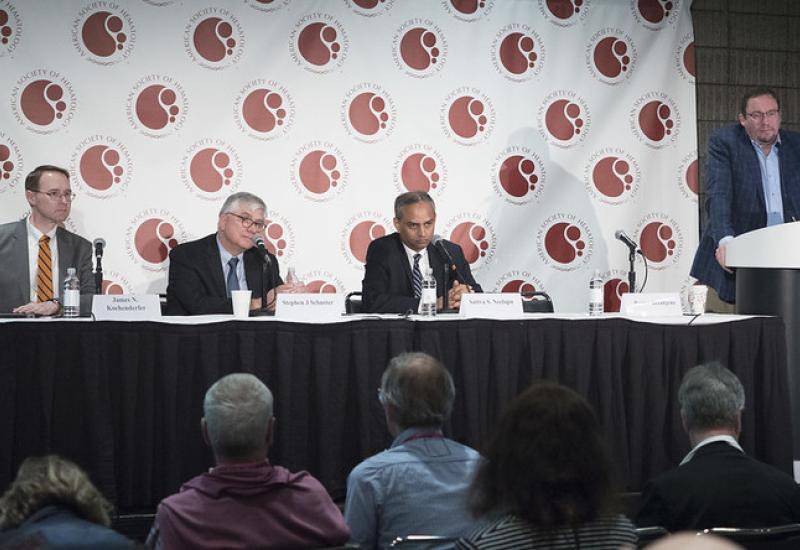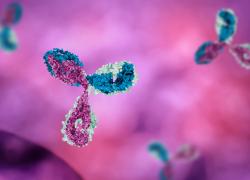
ESMO 2025 – Enhertu’s perioperative Destiny beckons
Enhertu improves outcomes in (neo)adjuvant breast cancer, but toxicity resurfaces.
Enhertu improves outcomes in (neo)adjuvant breast cancer, but toxicity resurfaces.

AstraZeneca and Daiichi Sankyo’s Enhertu could be heading for approval in neoadjuvant and adjuvant breast cancer, after strong data were presented at ESMO on Saturday from the Destiny-Breast11 and Destiny-Breast05 trials in these respective settings.
However, interstitial lung disease, a known toxicity of the agent, has reared its head again, specifically in the adjuvant Destiny-Breast05 study, where two drug-related ILD deaths were described – in addition to three other fatalities linked with respiratory problems that weren't adjudicated to be ILD. The issue could be especially relevant in the adjuvant setting, where patients might be exposed to Enhertu for a relatively long time.
Meanwhile, neoadjuvant Enhertu, tested in the Destiny-Breast11 study, showed similar rates of ILD, and ILD deaths, between the active and control arms. In this setting, Enhertu’s case might be helped by the fact that the treatment course is much shorter.
Still, the presenters appeared to dismiss concerns about ILD, with the Destiny-Breast11 presenter, Dr Nadia Harbeck of LMU University Hospital, Munich, telling an ESMO press conference that Enhertu was “here to stay in the early breast cancer setting”.
The discussant at ESMO's presidential session, Dana-Farber Cancer Institute’s Dr Sara Tolaney, noted the higher rate of ILD with Enhertu in Destiny-Breast05, but concluded that its benefits outweighed its risks in high-risk patients.
Much of the press conference discussion centred around choosing between neoadjuvant and adjuvant use. Dr Sara Hurvitz of the University of Washington, Seattle, came down in favour of the adjuvant setting, noting that event-free survival data in Destiny-Breast11 were immature, while the invasive disease-free survival rates seen in Destiny-Breast05 were “impressive”.
Adjuvant benefit
There seemed to be little debate about efficacy in Destiny-Breast05, in which 14 cycles of Enhertu monotherapy were compared against Kadcyla in high-risk patients who had previously received neoadjuvant therapy.
The primary endpoint was invasive disease-free survival, and here Enhertu showed a 53% reduction in the risk of events, which was highly statistically significant with a p value of less than 0.0001.
Grade 3 or higher treatment-emergent adverse events looked similar between the two arms, but overall ILD rates were 10% with Enhertu, versus 2% with Kadcyla. Among these were two Enhertu-related deaths adjudicated to have been due to ILD.
But a closer look at the adverse events shows three more notable deaths. One was said to be due to an Enhertu-unrelated respiratory tract infection, while another two, caused by acute respiratory failure and acute respiratory distress syndrome, both happened outside the adverse event reporting period. There were also two deaths in the Enhertu arm deemed related to disease progression.
It's already clear that ILD remains a toxicity of note, as indicated by the fact that both studies took special measures to monitor patients specifically for this adverse event. Both Tolaney and Hurvitz flagged the potential cost of this monitoring, should Enhertu be approved for perioperative use.
Enhertu in adjuvant HER2+ve breast cancer – Destiny-Breast05
| Enhertu | Kadcyla | |
|---|---|---|
| Invasive DFS event rate* | 6% | 13% |
| Stats | HR: 0.47; p<0.0001 | |
| DFS event rate | 6% | 13% |
| Stats | HR: 0.47; p<0.0001 | |
| ≥Gr3 TEAEs | 51% | 52% |
| Drug-related ILD | 10% | 2% |
| Gr5 drug-related ILD | 2 pts** | 0 pts |
Notes: data cutoff 2 July 2025; *primary endpoint; **3 additional deaths due to unrelated respiratory tract infection, acute respiratory failure & acute respiratory distress syndrome (last 2 outdside AE reporting period). Source: ESMO 2025.
As for Destiny-Breast11, this compared Enhertu plus paclitaxel, Herceptin and Perjeta (THP), versus chemo plus THP in the neoadjuvant setting.
The primary endpoint was pathologic complete response rate, which was 67% in the Enhertu arm, versus 53% with control – again statistically significant, with a p value of 0.003.
Event-free survival was a secondary endpoint and, although ESMO only saw a data cut at 5% maturity, there was an early trend favouring the Enhertu arm, with a hazard ratio of 0.56.
The investigators also concluded that the safety profile of Enhertu plus THP was favourable versus chemo plus THP.
Still, Astra and Daiichi haven’t had it all their way: a monotherapy arm in Destiny-Breast11 was discontinued after an interim analysis.
The latest data suggest that Enhertu could be heading for perioperative settings – deciding the best use within these might soon be up to doctors.
Enhertu in neoadjuvant HER2+ve breast cancer – Destiny-Breast11
| Enhertu + THP | Chemo + THP | |
|---|---|---|
| pCR* | 67% | 53% |
| Stats | p=0.003 | |
| EFS HR | 0.56 | |
| ≥Gr3 adverse events | 38% | 56% |
| Drug-related ILD | 4% | 5% |
| Gr5 drug-related ILD | 1 pt | 1 pt |
| Drug-related discontinuation | 14% | 10% |
| Death | 2 pts | 2 pts |
Notes: data cutoff 12 Mar 2025; *primary endpoint. THP=paclitaxel, Herceptin & Perjeta. Source: ESMO 2025.
1307













